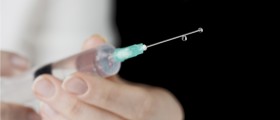
Ritalin is a drug that stimulates the central nervous system. In its nature, it is similar to amphetamines. Ritalin is said to work by activating the brain stern arousal system and cortex. It is a drug that has similar characteristics of stimulation to cocaine. If the drug is snorted or injected, it can have strong stimulant effects. Tablets of Ritalin come in 5 mg, 10 mg and 20 mg doses. The drug is intended for oral usage. The improper usage of Ritalin, such as through intravenous means, can lead to permanent, irreversible lung tissue damage.
Addiction
It seems there is a growing number of youngsters becoming addicted to Ritalin. The greatest risk of Ritalin overdose is in children aged six to nine years old. 289 cases of Ritalin overdose were reported over a two year period. The most commonly experienced symptoms and indications of Ritalin addiction include tachycardia, lethargy and agitation. In most cases, addiction or overdose occurred as a result of parents or caregivers allowing excess access to the drug.
Snorting Ritalin can lead to damage occurring to the delicate epithelial tissues. These tissues line the nasal cavities and air passages. Direct contact with drugs can lead to damage. Ritalin contains hydrochloride salt of Methylphenidate, and yields diluted hydrochloric acid upon contact with moisture. This does not normally cause problems in the stomach, as hydrochloric acid is already present there. However, hydrochloric acid in the nasal passages can lead to a burning of the delicate nasal tissues. This can thus lead to nose bleeds, open sores and maybe even nasal cartilage deterioration.
Hypodermic syringes deliver concentrated doses of a drug rapidly into ones system. As a result, many of the body’s natural defenses are bypassed. Intravenous injection also allows easier access to the body for dust, bacteria, pollen, allergens, yeasts and viruses. Intravenous drug usage can mean it is very difficult to control the intensity of the effects the drug might have. Thus, overdoses become more likely with this type of drug abuse.
Intravenous drug use can lead to drug overdoses, toxic reactions, blood clots and infections like hepatitis, AIDS and abscesses. Scars, as well as pulmonary, circulatory and skin problems can also occur. Intravenous injection makes one vulnerable to these problems because of the nature of syringes. Pollutants that might be in the syringe can cause serious problems when injected into the body tissues and veins.

















Your thoughts on this
Loading...